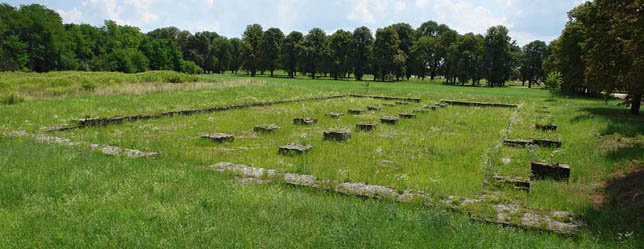
General information
Freely visited. Next to Fenékpuszta goes the Balaton bicycle path. It is an ideal destination by bike as well.
Curiosities
Valcum is the name from Roman time of Fenékpuszta. In connection with the fortress the word horreum is mentioned with the meaning of nothing horrible. Warehouses storing cereals, other foods, olive oil or wine were called like this.
Fenékpuszta and the Transdanubiawere reached by the Roman conquest in 15 BC. The local Celtic population took over the conquerors’ habits. It was important also that the territory was located beside an important distance and military route linking the Adriatic Sea and Danube Bend together and already in the 1st century Italian trades people lived here. By the middle of 4th century the enormous fortress had been built up which was meant to protect the local population and North Italy as well. The sizes were really convincing: its ground-space is 400x400m, wall-thickness 26 m, and the whole fortress was protected by 44 towers. It was damaged more times and later was restored as well. It could not survive only the attack of conquering Hungarians, its destruction was thanked for them as well. The stones of the fortress were carried away, some of them still today may be found in the pedestal of some old houses of Keszthely. Today we can see only the gate, the basilica with three doors and ruins of cereal store. When visiting Fenékpuszta do not miss the bird clinic found some hundred meters away from the ruins.




